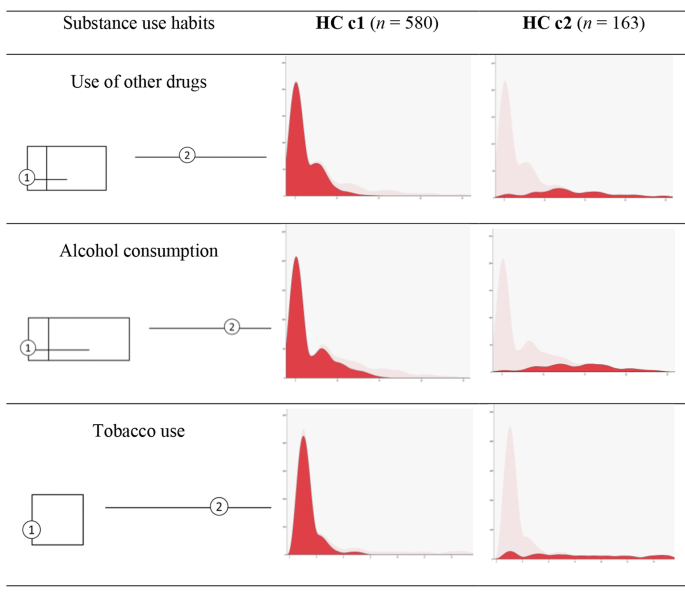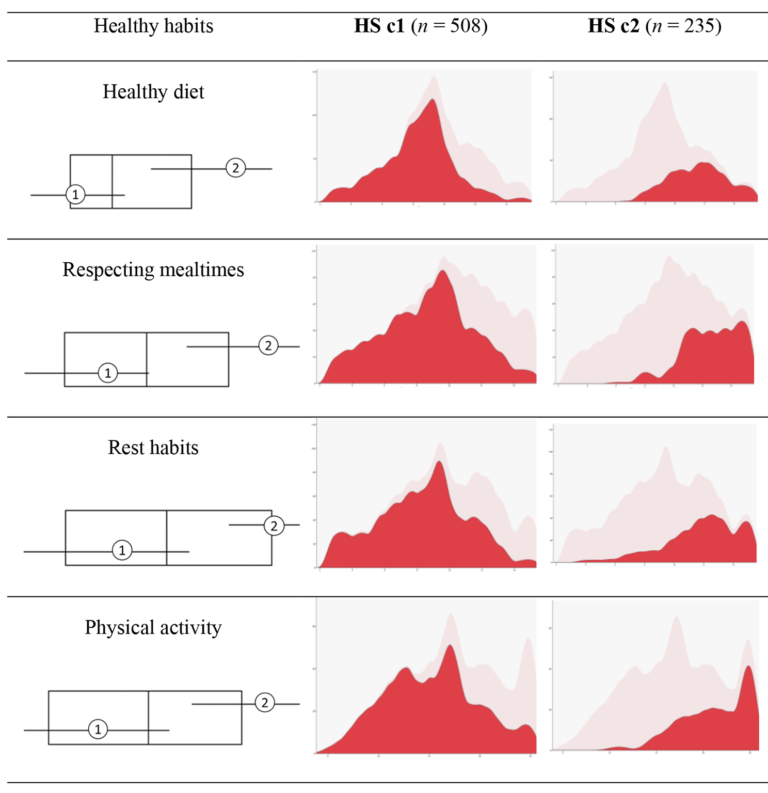Descriptive analysis and correlation
The results obtained regarding the correlations between the investigated variables are presented in Table 1. These results demonstrate how all aspects of prosocial behavior (empathy, respect, social relationships, and leadership) are significantly associated with emotional intelligence (attention, clarity, and leadership). is showing. repair) and increase life satisfaction. On the other hand, regarding the relationship between prosocial behavior and a healthy lifestyle, aspects of empathy were found to be correlated with healthy eating, respect for mealtimes, and rest habits. The respect dimension is positively correlated with healthy eating, respect for mealtimes, rest habits, and physical activity, and negatively correlated with smoking, alcohol, and other drug use. Finally, both social relationships and leadership dimensions are positively correlated with healthy eating, respect for mealtimes, rest habits, and physical activity.
Regarding the emotional intelligence results, it should be noted that, as mentioned above, this variable is related to all aspects of prosocial behavior (empathy, respect, social relationships, leadership). Regarding the association between emotional intelligence and a healthy lifestyle, it is noteworthy that there is no relationship between emotional attention factors and any aspect of a healthy lifestyle. Elements of emotional clarity, on the other hand, are related to healthy eating, respecting mealtimes, rest habits, and physical activity. Finally, emotional repair factors are positively related to healthy eating, respect for mealtimes, rest habits, and physical activity, and negatively related to the use of other drugs. There is a relationship between life satisfaction and elements of emotional clarity and emotional repair.
Finally, the relationship found between a healthy lifestyle and life satisfaction is similar to that of a healthy lifestyle, excluding consumption aspects (tobacco use, alcohol use, and other drug use). All dimensions (healthy eating, respect for mealtimes, rest habits, and physical activity) were significantly positive. ) It was negative.
Violence and consumption as risk factors
The data in Table 2 demonstrate how adolescents who do not bully their peers exhibit higher levels of empathy and respect. Notably, non-victims have higher levels of social relationships. On the other hand, observers of violence are more empathetic and show greater respect than non-observers.
Table 3 shows that adolescents who do not use tobacco or alcohol show more respect in social interactions than adolescents who do.
Table 4 presents data on different aspects of emotional intelligence (attention, clarity, repair) and different roles of violence (bully, victim, observer). The results indicate that adolescents who do not engage in bullying have better emotional repair than adolescents who bully. On the other hand, those who observed violence had higher mean scores on emotional attentiveness, and those who did not observe violence had higher scores on emotional repair. No significant differences were found for victims of bullying.
Referring to the differences found between emotional intelligence and alcohol and tobacco consumption (Table 5), adolescents who do not consume either of these two substances show greater emotional repair than those who do. It's worth noting that it's better.
Healthy habits and drug use: Profiles and differences in prosocial behavior and emotional intelligence
First, to identify profiles based on healthy habits, we performed a two-step cluster analysis on four items (healthy eating, respecting mealtimes, rest habits, and physical activity); obtain three groups or clusters (Figure 1). . In this case, we obtain an average silhouette of 0.4 as a measure of cluster quality.

Composition of healthy behavior clusters
The first cluster (HSc1) consists of 68.4% of cases (n= 508), characterized by scores below the overall average for: Healthy eating (M= 8.28), respect for mealtimes (M= 8.67), rest habits (M= 8.33), and physical activity (M= 15.32).
The second cluster (HSc2), 31.6% of cases (n= 235), defined by the sample mean score above on healthy eating (M= 11.56), respecting mealtimes (M= 12.58), rest habits (M= 11.90), and physical activity (M= 21.23).
Table 6 presents the descriptive data for both clusters and the results of the comparison of means between the prosocial behavior and emotional intelligence profiles. These results show that young people who score higher on healthy eating, respect for mealtimes, rest habits, and physical activity (HSc2) have better empathy, respect, social relationships, leadership, clarity, and emotional repair. It shows that there is.
Meanwhile, to identify profiles based on substance use habits, a two-step cluster analysis is performed using three entries for alcohol, tobacco, and other drug use. Automatic grouping results in two clusters (Figure 2). In this case, we obtain an average silhouette of 0.7 as a measure of cluster quality.

Composition of substance use clusters
The first cluster (HCc1) consists of 78.1% of cases (n= 580), characterized by scores below the overall average for alcohol (M= 6.58), tobacco (M= 3.33), and other drugs (M= 6.06).
The second cluster (HCc2), 21.9% of cases (n= 163), defined by the sample mean score for alcohol above (M= 14.30), tobacco (M= 8.21), and other drugs (M= 13.60).
Table 7 shows the descriptive data for both clusters and the results of the comparison of means between the profiles of prosocial behavior and emotional intelligence. These results indicate that youth with lower intakes of alcohol, tobacco, and other drugs (HCC1) have higher respect scores.
Probability of healthy lifestyle and drug use by age, gender, prosocial behavior, and emotional intelligence
To determine the probability that young people lead a healthy lifestyle and consume substances such as alcohol, tobacco, and other drugs depending on various variables such as age, gender, prosocial behavior, and emotional intelligence. A two-sided logistic regression analysis was performed.
Table 8 shows how gender, namely maleness, respect, social relationships, and emotional repair are more likely to lead to a healthy lifestyle.
The probability of having a drug abuse habit (Table 9) is related to the adolescent's age, the empathy aspect of prosocial behavior, and the emotional clarity of emotional intelligence.


